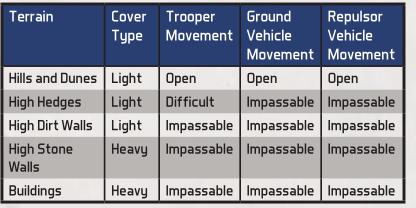So had a couple of scenarios come up and needed some clarification.
Trooper. Barricade! ATST
So say an ATST walks up to a barricade and wants to shoot at a trooper that is 1+ range away from the barricade and in the open. Does the trooper get cover because the barricade is between him and the ATST? Even though he is in the open and when viewing him from behind the top of the ATST he is clearly visible and in the open? Does height of weapons on models not matter?
Also
Trooper. Barricade! T-47
Similar situation. Trooper is 1+ range from a barricade and there is a T-47 1+ range on the other side of the barricade. Trooper is in the open clearly and the speeder is at height 2, but does the trooper still get cover because a line passes through the barricade when drawn between them? When viewing the target from the T-47 it is clearly in the open.
I guess I'm just trying to clarify this. It seems like it should be in the open based on every other table top game I've played, but the rules seem like it's trying to say different.
